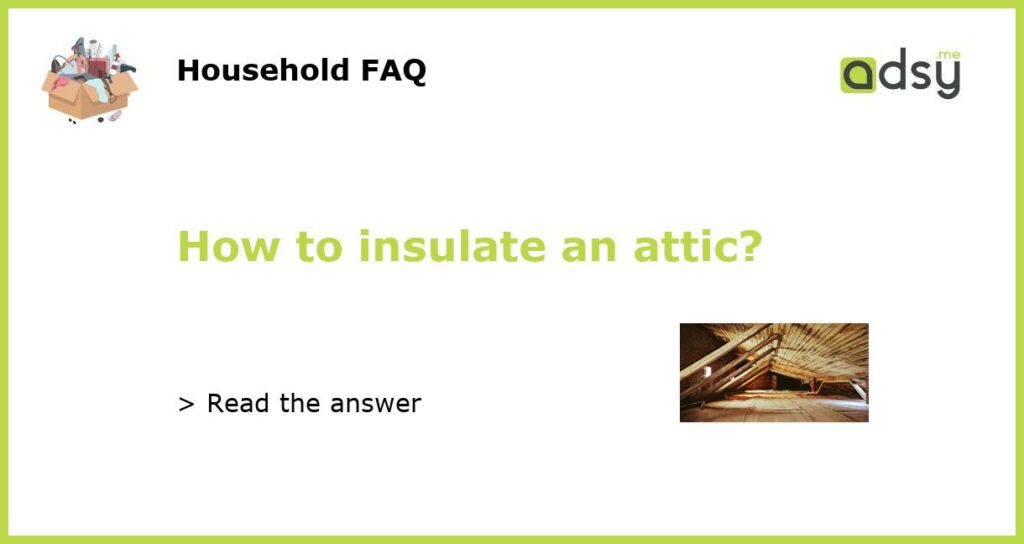Why insulate your attic?
Insulating an attic is crucial for maintaining a comfortable indoor environment and reducing energy costs. An attic that lacks insulation can be a major source of heat loss during the winter and heat gain during the summer. By properly insulating your attic, you can create a thermal barrier that reduces the transfer of heat between your living space and the outdoors. This helps to keep your home warm in the winter and cool in the summer, reducing the need for excessive heating and air conditioning.
Determine the type and amount of insulation needed
The first step in insulating your attic is to determine the type and amount of insulation needed. The most common types of insulation for attics are fiberglass, cellulose, and spray foam insulation. Fiberglass insulation comes in batts or rolls, while cellulose insulation is loose-fill made from recycled paper or cardboard. Spray foam insulation is a more expensive option but provides better air sealing and higher R-value. The R-value measures the insulation’s resistance to heat transfer; the higher the R-value, the more effective the insulation.
Prepare the attic for insulation
Before starting the insulation process, it’s important to prepare the attic to ensure proper installation. Start by sealing any air leaks in the attic, including gaps around pipes, electrical wires, and vents. These gaps can be sealed with caulk or expanding foam insulation. Additionally, make sure the attic is properly ventilated to prevent moisture buildup. Check for any signs of mold or water damage, and address these issues before insulating. It’s also important to ensure that there is adequate ventilation between the insulation and the roof decking to prevent condensation and potential damage to the roof.
Install the insulation
Once the attic is prepared, it’s time to install the insulation. If using fiberglass or cellulose insulation, simply roll out the batts or spread the loose-fill insulation evenly throughout the attic. Make sure to cover the entire attic floor, including the edges and corners. If using spray foam insulation, it’s recommended to hire a professional, as the installation process requires specialized equipment and expertise. The spray foam is applied directly to the desired areas, expanding to fill any gaps or cracks and creating an airtight seal.
Take necessary safety precautions
When insulating an attic, it’s important to take necessary safety precautions to protect yourself. Wear protective clothing, gloves, and a mask to avoid skin irritation and inhalation of insulation fibers. If working with spray foam insulation, ensure proper ventilation and use eye protection. Be cautious of any electrical wiring or obstacles in the attic and avoid stepping on the ceiling below, as it may not support your weight. If unsure about any aspect of the insulation process, it’s recommended to consult a professional insulation contractor.






